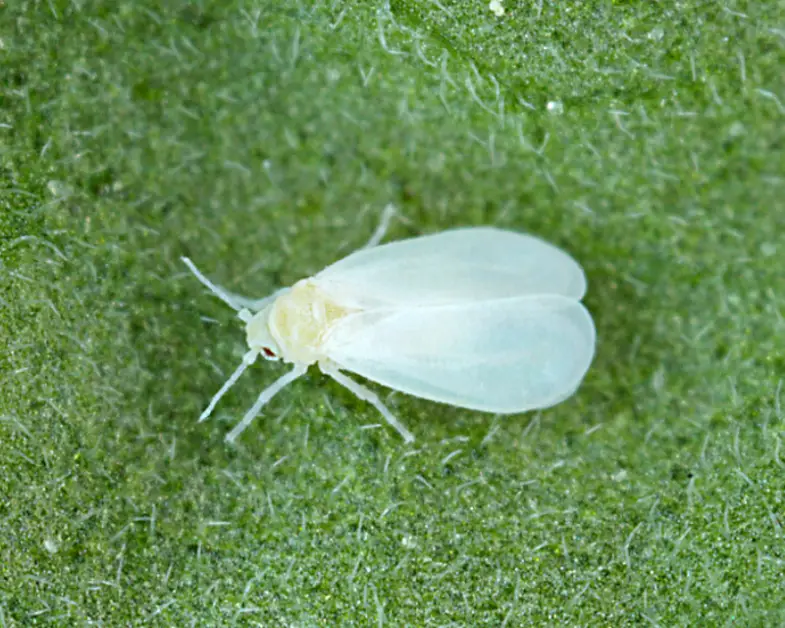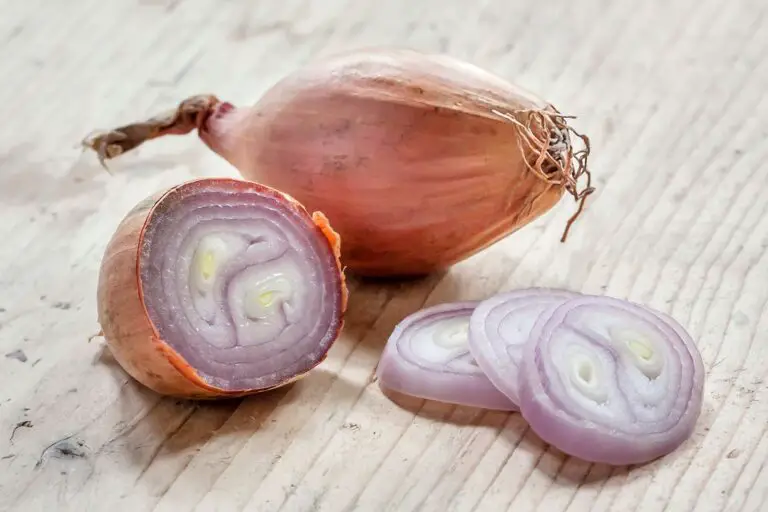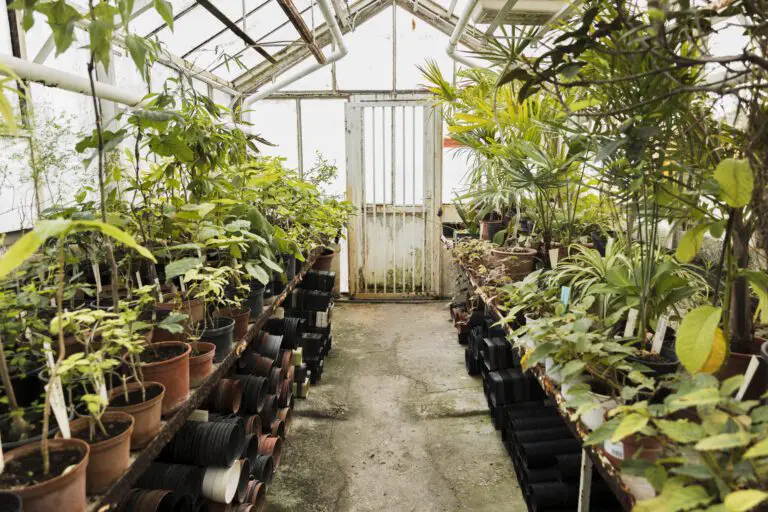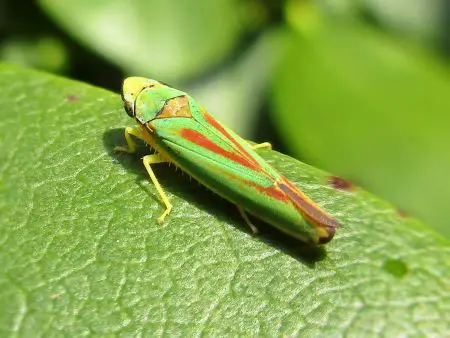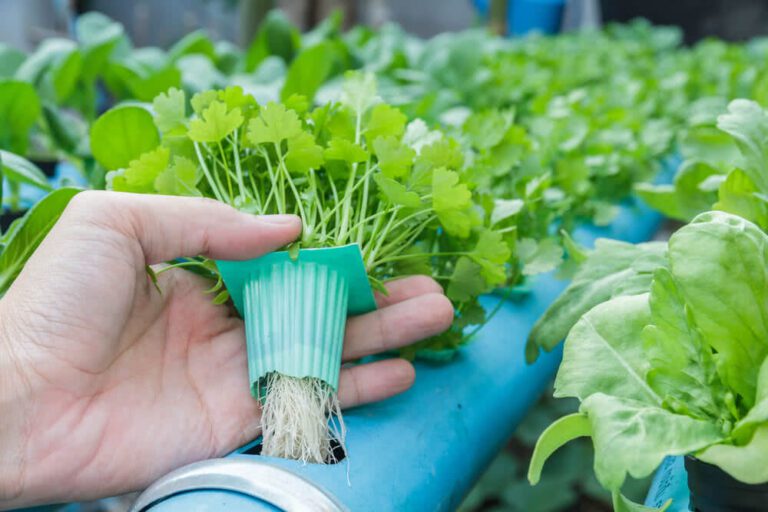How to Get Rid of Whiteflies: 5 Effective Ways to Manage and Stop These Pests from Your Plants
Are pesky whiteflies wreaking havoc on your beloved plants? Don’t let these tiny pests take over your garden paradise! Picture this: you step outside to admire your flourishing plants, only to find them covered in a swarm of white-winged nuisances. But fear not, fellow gardeners! In this guide, we’ll unveil five savvy strategies to combat and conquer those bothersome whiteflies, ensuring your greenery stays vibrant and healthy. From tried-and-true methods to innovative solutions, we’ve got you covered. So, bid farewell to whitefly woes and reclaim your garden oasis today! Let’s dive in and discover the secrets to banishing these pests for good.
Table of Contents
Understanding the Whitefly Infestation: Identifying the Signs and Symptoms on Your Plants
As a gardener, it is crucial to be able to identify the signs and symptoms of a whitefly infestation on your plants. These tiny, sap-sucking insects can wreak havoc on your garden if left unchecked.

- Small, winged insects flying around plants when disturbed indicate a whitefly infestation. These pests are typically white or pale yellow and measure about 1/16 of an inch long.
- Whiteflies leave behind a sticky residue called honeydew on plant leaves, which can attract ants and promote the growth of black sooty mold.
- Yellowing, wilting, or distorted leaves on plants are another sign of a whitefly infestation. This damage results from the whiteflies feeding on the plant’s sap, leading to nutrient deficiencies and overall plant stress.
Identifying these signs and symptoms early on is crucial in managing whitefly infestations effectively. By taking proactive measures and implementing appropriate control methods, you can prevent these pests from causing extensive damage to your garden. Stay tuned as we explore the lifecycle of whiteflies and why breaking the cycle is essential in our next section.
The Lifecycle of Whiteflies: Why It’s Important to Break the Cycle
Whiteflies are small, sap-sucking insects that can wreak havoc on your plants. Understanding the lifecycle of whiteflies is crucial in order to effectively combat their infestations. These pests go through four main stages: egg, nymph, pupa, and adult.

- Lifecycle of Whiteflies:
- Egg Stage: Whiteflies lay eggs on the undersides of leaves. Eggs hatch into nymphs.
- Nymph Stage: Nymphs feed on plant sap, causing damage.
- Pupal Stage: Nymphs develop into pupae, which are immobile and covered by a protective waxy layer.
- Adult Stage: Pupae transform into adult whiteflies, which are small, winged insects.
- Effective Management Strategies:
- Monitor Regularly: Inspect plants for signs of whitefly infestations.
- Physical Removal: Remove infested leaves or plants promptly.
- Biological Control: Introduce natural enemies (like parasitic wasps) to control whiteflies.
- Cultural Practices:
- Pruning: Trim affected plant parts to reduce whitefly populations.
- Reflective Mulches: Use reflective mulches to deter whiteflies.
- Companion Planting: Plant marigolds, basil, or nasturtiums to repel whiteflies.
- Chemical Control (if necessary): Use insecticidal soaps or neem oil.
Remember to tailor these strategies to your specific garden conditions and the severity of the infestation. Consistent monitoring and early intervention are key to successful whitefly management. 🌱
Creating an Unfavorable Environment: How to Modify Your Garden to Discourage Whiteflies
Creating an unfavorable environment in your garden is crucial to discourage whiteflies and protect your plants. These pesky insects thrive in warm temperatures, so one effective strategy is to provide shade in the affected areas.

- Shading Devices and Bright Colors:
- Shade Cloth: Install shade cloth or use nearby trees and shrubs to cast shade over vulnerable plants. Whiteflies are less likely to thrive in shaded areas.
- Bright Colors: Plant flowers and vegetables with light-colored blooms away from susceptible plants. The bright colors will attract whiteflies, diverting their attention.
- Proper Airflow and Plant Spacing:
- Maximize Air Circulation: Strategically position your plants to allow for proper airflow. Whiteflies prefer stagnant air, so good circulation discourages their presence.
- Avoid Overcrowding: Give each plant enough space to grow without touching neighboring plants. Overcrowding can create hiding spots for whiteflies.
- Prompt Debris Removal:
- Cleanliness: Regularly remove fallen leaves, debris, and plant detritus. Whiteflies often hide in these areas.
- Inspect Undersides of Leaves: Check the undersides of leaves for whitefly eggs and nymphs. Remove infested leaves promptly.
- Complementary Strategies:
- Biological Control: Introduce natural predators like parasitic wasps or ladybugs to keep whitefly populations in check.
- Reflective Mulches: Use reflective mulches to deter whiteflies from settling on the soil around your plants.
Along with these modifications, combining cultural control methods and integrating natural predators into your garden can further enhance your defense against this persistent pest.
Cultural Control Methods: Techniques to Reduce Whitefly Populations Naturally
Cultural control methods offer gardeners effective and natural techniques to combat whitefly infestations. By implementing these methods, you can not only reduce whitefly populations but also maintain the overall health of your garden.
- Regular Inspection:
- Regularly inspect plants for signs of whitefly activity.
- Look for tiny white insects flying around when disturbed.
- Check for sticky honeydew residue on leaves.
- Prompt Intervention:
- Confirm whitefly presence and act promptly.
- Remove heavily infested plants to prevent spread.
- Large infestations can overwhelm a garden.
- Beneficial Insects:
- Encourage natural enemies (ladybugs, lacewings, parasitic wasps).
- These insects feed on whiteflies and help control populations.
- Provide diverse flowering plants to attract beneficial allies.
- Physical Barriers:
- Use fine mesh screens to create obstacles.
- Prevent whiteflies from reaching susceptible plants.
- Screens hinder egg-laying and reduce infestations.
Overall, cultural control methods offer a sustainable and environmentally friendly approach to reducing whitefly populations. By incorporating these techniques into your gardening routine, you can successfully manage whitefly infestations while maintaining a healthy and thriving garden.
Physical Barriers and Traps: Using Physical Means to Prevent and Capture Whiteflies
Physical barriers and traps are effective methods for preventing and capturing whiteflies in your garden. By creating a physical barrier, you can prevent whiteflies from infesting your plants and causing damage.
- Floating row covers: Made of lightweight fabric like polypropylene or polyester, these covers allow sunlight and water to reach plants while keeping whiteflies out. Securely anchor them to the ground to prevent any gaps that could allow pests to enter.
- Sticky traps: Coated with a sticky substance, these traps attract and catch whiteflies upon contact. By placing them strategically around your garden, you can effectively reduce the whitefly population and prevent further infestations.
- Complementary methods: While physical barriers and traps are effective, they may not completely eradicate whiteflies. It’s advisable to combine these techniques with other control methods for optimal results.
- Regular monitoring and maintenance: Keep a close eye on your plants and implement cultural control methods to manage whiteflies effectively in the long term.
- Persistence and vigilance: Whiteflies can be persistent pests, so remain vigilant and proactive in your pest management efforts to keep them at bay.
By using physical barriers and traps alongside other control measures, you can greatly reduce the impact of whiteflies and protect your garden from their damaging effects.
Using Valibe Floating Row Covers to control pests in my garden has been a game-changer. These covers not only provide reliable protection against frost but also act as a physical barrier, effectively keeping pests like insects and birds at bay. The lightweight yet durable material ensures that my plants remain undisturbed while still receiving ample sunlight and airflow. Overall, these row covers have proven to be an invaluable asset in maintaining a healthy and pest-free garden.
- Freeze Protection: Valibe Floating Row Covers offer effective protection for plants against frost and freezing temperatures, helping to extend the growing season and prevent damage to delicate crops.
- Lightweight and Durable: Made from high-quality material, these covers are lightweight yet durable, providing reliable protection without weighing down plants or obstructing sunlight.
- Versatile Use: Suitable for various garden beds, raised beds, and vegetable patches, offering flexibility in covering different types of crops and garden layouts.
- Pest Prevention: In addition to frost protection, the covers also act as a barrier against pests such as insects, birds, and small animals, reducing the risk of crop damage and loss.
- Easy to Use: The floating design allows for quick and straightforward installation and removal, making it convenient for gardeners of all skill levels.
- Limited Size Options: The available size options may not accommodate larger garden beds or customized setups, requiring multiple covers or alternative solutions for comprehensive coverage.
- Potential Wind Displacement: In windy conditions, the covers may shift or blow away, especially if not properly secured, necessitating additional anchoring or reinforcement.
- Light Transmission: While providing protection, the covers may reduce the amount of sunlight reaching plants, potentially affecting growth and productivity, particularly for light-sensitive crops.
- Storage Space: When not in use, the covers may require storage space, which could be a consideration for gardeners with limited storage capacity or seasonal gardening setups.
- Price: Some users may find the price of the covers relatively high compared to other frost protection methods or materials, especially when covering larger areas.
Introducing Natural Predators: Utilizing Beneficial Insects to Control Whitefly Infestations
Natural predators can be highly effective in controlling whitefly infestations in your garden. These beneficial insects act as natural enemies of whiteflies, helping to regulate their population and prevent widespread damage to plants. Ladybugs, lacewings, and parasitic wasps are just a few examples of natural predators that can be introduced to your garden to combat whiteflies.
- Ladybugs (Lady Beetles):
- Voracious predators of whiteflies.
- Effective in both larval and adult stages.
- A single ladybug can consume hundreds of whiteflies daily.
- Lacewings:
- Larvae feed on whitefly eggs and nymphs.
- Regular releases can significantly reduce whitefly populations.
- Delicate insects with valuable pest control abilities.
- Parasitic Wasps:
- Lay eggs inside whitefly nymphs.
- Hatched wasp larvae feed on whiteflies from the inside.
- Ultimate result: whitefly mortality.
- Selecting Beneficial Insects:
- Consult local agricultural extension services or garden experts.
- Choose appropriate predator species for your specific whitefly pest.
- Natural and environmentally friendly approach.
By introducing these beneficial allies, you can maintain a healthy garden ecosystem and keep whitefly populations in check.
Organic Insecticides: Safe and Effective Products for Whitefly Management
Organic insecticides offer a safe and effective solution for managing whitefly infestations in your garden. These products are derived from natural sources and are formulated to specifically target whiteflies while minimizing the impact on beneficial insects and the environment.
Made from fatty acids and potassium salts.
Suffocates whiteflies on contact.
Apply in early morning or late evening to avoid leaf burn.
Follow product label instructions for proper application.
Derived from neem tree seeds.
Contains azadirachtin, disrupting whitefly feeding and reproduction.
Acts as a repellent, discouraging whiteflies from landing.
Apply as a foliar spray, covering both leaf surfaces.
Read and follow manufacturer’s instructions for safe use.
By incorporating these organic insecticides into your whitefly management strategy, you can effectively control infestations while maintaining a safe and environmentally-friendly garden. Remember to always use these products responsibly and in accordance with the instructions provided, ensuring the health and vitality of your plants and the surrounding ecosystem.
Using Bonide Neem Oil for pest control in my garden has been a game-changer. This organic solution effectively targets a wide range of pests, including aphids, mites, and whiteflies, without posing harm to beneficial insects or the environment. Its versatile application makes it suitable for various plants, providing systemic protection against pests and fungal diseases. While the odor may be strong initially, the results speak for themselves, with noticeable reductions in pest populations and healthier, happier plants. Overall, Bonide Neem Oil has become an essential tool in my gardening arsenal for maintaining a thriving and pest-free garden.

✅ Versatile Use: Neem oil can effectively control a wide range of pests, including aphids, mites, whiteflies, and more, making it suitable for various plants and garden situations.
✅ Multipurpose: In addition to pest control, neem oil also has fungicidal properties, helping to prevent and treat fungal diseases such as powdery mildew and black spot on plants.
✅ Systemic Action: When used as a soil drench, neem oil can be absorbed by plants, providing systemic protection against pests and diseases from within.
✅ Environmentally Friendly: Derived from the neem tree, this natural product is biodegradable and breaks down quickly in the environment, minimizing harm to ecosystems.
❌ Application Frequency: Effective pest control may require frequent application, especially in the case of heavy pest infestations or persistent problems, which could be time-consuming for some gardeners.
❌ Potential Residue: While considered safe for edible crops when used according to instructions, neem oil may leave a residue on fruits and vegetables, requiring thorough washing before consumption.
❌ Temperature Sensitivity: Neem oil may become solid or separate at colder temperatures, requiring warming or agitation before use, which could be inconvenient in certain climates.
❌ Slow Action: Neem oil may take some time to show visible results in controlling pests or diseases, requiring patience and consistent application for optimal effectiveness.
Systemic Insecticides: Understanding and Properly Applying Chemical Treatments
Systemic insecticides are powerful tools in the battle against whitefly infestations. These chemicals are designed to be absorbed by the plant’s vascular system, allowing them to be distributed throughout the entire plant. As a result, they can reach the hidden areas where whiteflies often lay their eggs and feed, effectively eliminating the pests at all life stages.
- Identify the appropriate systemic insecticide: Start by selecting the systemic insecticide recommended for controlling whiteflies in your region. Different products may contain varying active ingredients and concentrations, so choose the one best suited to your needs.
- Follow instructions carefully: Ensure safe and effective application by meticulously following the instructions provided with the insecticide. Pay attention to dosage, application method, and safety precautions.
- Wear protective gear: Always wear appropriate protective gear, such as gloves and goggles, when handling and applying systemic insecticides. This helps prevent exposure to harmful chemicals.
- Avoid windy conditions: Apply systemic insecticides on calm days to prevent drift, which can harm beneficial insects and other non-target organisms.
- Consider timing: Take into account the timing of the application, as systemic insecticides may have varying rates of absorption and persistence depending on the plant species and environmental conditions. Apply when conditions are optimal for effectiveness and minimal impact on the environment.
Homemade Remedies: DIY Solutions to Combat Whiteflies
The presence of whiteflies in your garden can be frustrating and can cause significant damage to your plants. Fortunately, there are several homemade remedies that you can try to combat these pesky insects. One effective solution is creating a homemade insecticidal soap spray.
- Mild Liquid Soap Spray:
- Mix 1 tablespoon of mild liquid soap with 1 liter of water.
- Stir well to combine thoroughly.
- Transfer the solution to a spray bottle.
- Apply directly to affected plants, targeting both upper and lower leaf surfaces.
- The soap spray suffocates whiteflies and disrupts their lifecycle.
- Neem Oil Spray:
- Dilute 1 teaspoon of neem oil in 1 liter of water.
- Mix well.
- Spray onto infested plants, covering both leaf surfaces.
- Neem oil interferes with whitefly growth and development.
- Follow manufacturer’s instructions for safe use.
It’s important to note that homemade remedies may not completely eradicate whitefly populations, especially in severe infestations. However, they can be a cost-effective and environmentally friendly option to help control and reduce their numbers.
Regular Monitoring and Early Detection: Why It’s Crucial to Stay Vigilant
Regular monitoring and early detection are crucial practices in the battle against whitefly infestations. By staying vigilant, gardeners can catch the signs of whiteflies before they have a chance to wreak havoc on their plants. These tiny pests are known for their rapid reproduction and ability to quickly damage crops, making early detection critical for effective control.
- Importance of regular monitoring: Whiteflies often go unnoticed until their population has reached significant levels, as they hide on the undersides of leaves and blend in with the foliage.
- Early detection: By regularly inspecting the undersides of leaves, especially in whitefly-prone areas, gardeners can detect whiteflies early on, before visible damage occurs.
- Signs to look for: Watch out for yellowing leaves and sticky honeydew residue, which are indicators of whitefly presence and potential damage to the plant.
- Simple monitoring routine: Integrate whitefly monitoring into regular gardening activities by dedicating a few minutes each week to closely observe plants for signs of infestation.
- Swift response: With early detection, gardeners can quickly respond to emerging whitefly populations, employing appropriate control methods to prevent further damage to their plants.
- Knowledge is power: In the battle against whiteflies, staying proactive through regular monitoring is crucial for successful management and protecting plant health.
| Importance of Regular Monitoring for Whitefly | Key Reasons for Vigilance |
|---|---|
| 1. Early Infestation Identification | – Prevent Rapid Spread: Detecting whiteflies early prevents rapid population growth. |
| – Minimize Plant Damage: Early intervention minimizes potential damage to plants. | |
| 2. Preventing Plant Stress | – Reduce Plant Stress: Timely control helps prevent stress on infested plants. |
| – Preserve Plant Vitality: Minimize the impact on overall plant health. | |
| 3. Protecting Surrounding Plants | – Isolation Opportunities: Early detection allows for isolating affected plants. |
| – Prevent Widespread Infestations: Limit the spread to nearby plants. | |
| 4. Natural Predators and Biological Control | – Beneficial Insect Intervention: Prompt action supports the role of natural predators. |
| – Maintain Ecosystem Balance: Preserve the balance of beneficial insects. | |
| 5. Reducing the Need for Chemical Intervention | – Environmental Impact: Early control minimizes the need for extensive chemical use. |
| – Preserve Beneficial Insects: Reduce harm to beneficial insects in the garden. | |
| 6. Economic Impact on Agriculture | – Protecting Crops: Early detection is critical for commercial agriculture to safeguard crops. |
| – Minimizing Yield Loss: Timely control helps reduce potential yield losses. | |
| 7. Cultural Practices and Integrated Pest Management | – Tailor Control Strategies: Early detection allows for strategic and targeted interventions. |
| – Promote Healthy Gardening Practices: Support integrated pest management approaches. |
Whitefly Prevention: Tips to Prevent Future Infestations in Your Garden
Tips to Prevent Future Whitefly Infestations in Your Garden
1. Maintain Proper Plant Health: One of the most effective ways to prevent whitefly infestations is to keep your plants healthy and strong. Whiteflies tend to target weak and stressed plants, so maintaining good plant health is essential. Provide your plants with adequate sunlight, water, and nutrients to promote robust growth. Regularly inspect your plants for any signs of nutrient deficiencies, diseases, or pests, and take appropriate measures to address them promptly. By keeping your plants healthy, you can reduce the likelihood of whitefly infestations taking hold in your garden.
2. Practice Good Garden Hygiene: Whiteflies can overwinter on plant debris and weeds, providing a reservoir for infestations to reoccur in the following season. To prevent this, it’s crucial to practice good garden hygiene. Remove any dead or decaying plant material from your garden beds and dispose of them properly. Keep your garden free of weeds, as they can provide hiding places for whiteflies and other pests. Regularly clean your gardening tools and equipment to prevent the transfer of whiteflies from one area to another. By implementing good garden hygiene practices, you can significantly reduce the risk of whitefly infestations in your garden.
Remember, prevention is key when it comes to whiteflies. By maintaining plant health and practicing good garden hygiene, you can create an environment that is less favorable for whitefly infestations to occur. Stay vigilant and address any signs of infestation promptly to protect your garden from these persistent pests.
Companion Planting: Choosing Plants That Deter Whiteflies and Protect Your Garden
Companion planting is a popular technique used by gardeners to naturally deter pests and protect their plants. When it comes to whiteflies, choosing the right companion plants can make a significant difference in preventing infestations and maintaining a healthy garden. By strategically selecting plants that naturally repel whiteflies, you can create an environment that is less attractive to these troublesome insects.
- Marigold: Plant marigolds around your garden or near vulnerable plants to naturally deter whiteflies with their strong scent.
- Marigolds emit a fragrance that repels various pests, including whiteflies, reducing the likelihood of infestations.
- They attract beneficial insects like ladybugs and lacewings, natural predators of whiteflies, further helping to control their populations.
- Rosemary: Utilize rosemary as a companion plant to ward off whiteflies and other pests while adding flavor to culinary dishes.
- The strong aroma of rosemary acts as a natural deterrent for whiteflies, making it a valuable addition to your garden.
- Plant rosemary near susceptible plants to protect them from whitefly infestations.
- Rosemary is low-maintenance and adaptable to various growing conditions, suitable for both beginner and experienced gardeners.
Maintaining Plant Health: Essential Practices to Keep Your Plants Strong and Resistant to Whiteflies
Maintaining the health of your plants is essential in order to keep them strong and resistant to whiteflies. By following a few key practices, you can ensure that your plants have the best chance of thriving and remaining free from infestation.
- Proper Watering:
- Avoid over-watering, which weakens roots and attracts pests.
- Also, prevent underwatering to reduce plant stress.
- Balance watering based on humidity, soil type, and growth stage.
- Adequate Nutrition:
- Supply essential nutrients through fertilizers or organic amendments.
- Well-fed plants withstand pests better and recover faster.
- Conduct a soil test to identify nutrients deficiencies.
- Regular Pruning:
- Remove dead or diseased foliage promptly.
- Eliminate hiding spots for whiteflies and improve air circulation.
- Pruning reduces the risk of fungal diseases.
By incorporating these essential practices into your plant care routine, you can provide your plants with the best chance to remain strong and resistant to whiteflies. By maintaining proper watering, providing adequate nutrition, and regular pruning, you can create a healthy environment that discourages infestation and ensures the longevity of your garden.
Watch video for more information:
FAQ
What are some common signs and symptoms of a whitefly infestation on plants?
Common signs of a whitefly infestation include yellowing or wilting leaves, sticky honeydew residue on leaves, and the presence of small, white-winged insects flying around the plant.
Can whiteflies cause significant damage to plants?
Yes, whiteflies can cause significant damage to plants by feeding on the sap, which weakens the plant and reduces its ability to photosynthesize. This can lead to stunted growth, leaf drop, and even death of the plant if the infestation is severe.
How long does the lifecycle of a whitefly typically last?
The lifecycle of a whitefly usually lasts around 30 days, but can vary depending on environmental conditions such as temperature and humidity.
What are some natural predators that can help control whitefly populations?
Natural predators of whiteflies include ladybugs, lacewings, parasitic wasps, and predatory mites. Introducing these beneficial insects to your garden can help reduce whitefly infestations.
Are organic insecticides effective in managing whiteflies?
Yes, organic insecticides can be effective in managing whiteflies. They are derived from natural sources and pose less risk to the environment compared to synthetic chemical insecticides. However, proper application and adherence to label instructions are important for optimal effectiveness.
How can I prevent future whitefly infestations in my garden?
To prevent future whitefly infestations, you can implement measures such as regularly monitoring your plants, practicing good garden hygiene by removing infested plant debris, using physical barriers like row covers, and selecting companion plants that deter whiteflies.
Can companion planting help deter whiteflies and protect my garden?
Yes, companion planting can be an effective way to deter whiteflies. Plants such as marigolds, basil, and petunias are known to repel whiteflies and can be planted alongside susceptible plants to act as natural deterrents.
How important is maintaining overall plant health in preventing whitefly infestations?
Maintaining overall plant health is crucial in preventing whitefly infestations. Healthy plants are more resistant to pests and diseases, making them less attractive to whiteflies. Practices such as proper watering, fertilization, and providing adequate sunlight contribute to plant health and resilience.

Studied Agricultural Engineering-Plant Protection at University of California, Davis.
Head of Content writing team at Southelmontehydroponics.com

